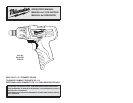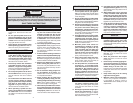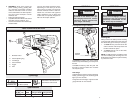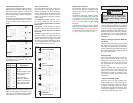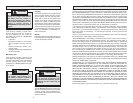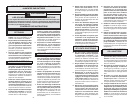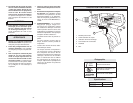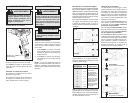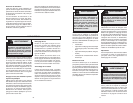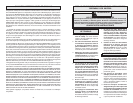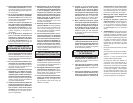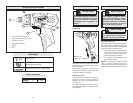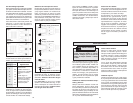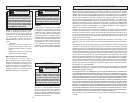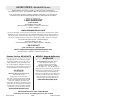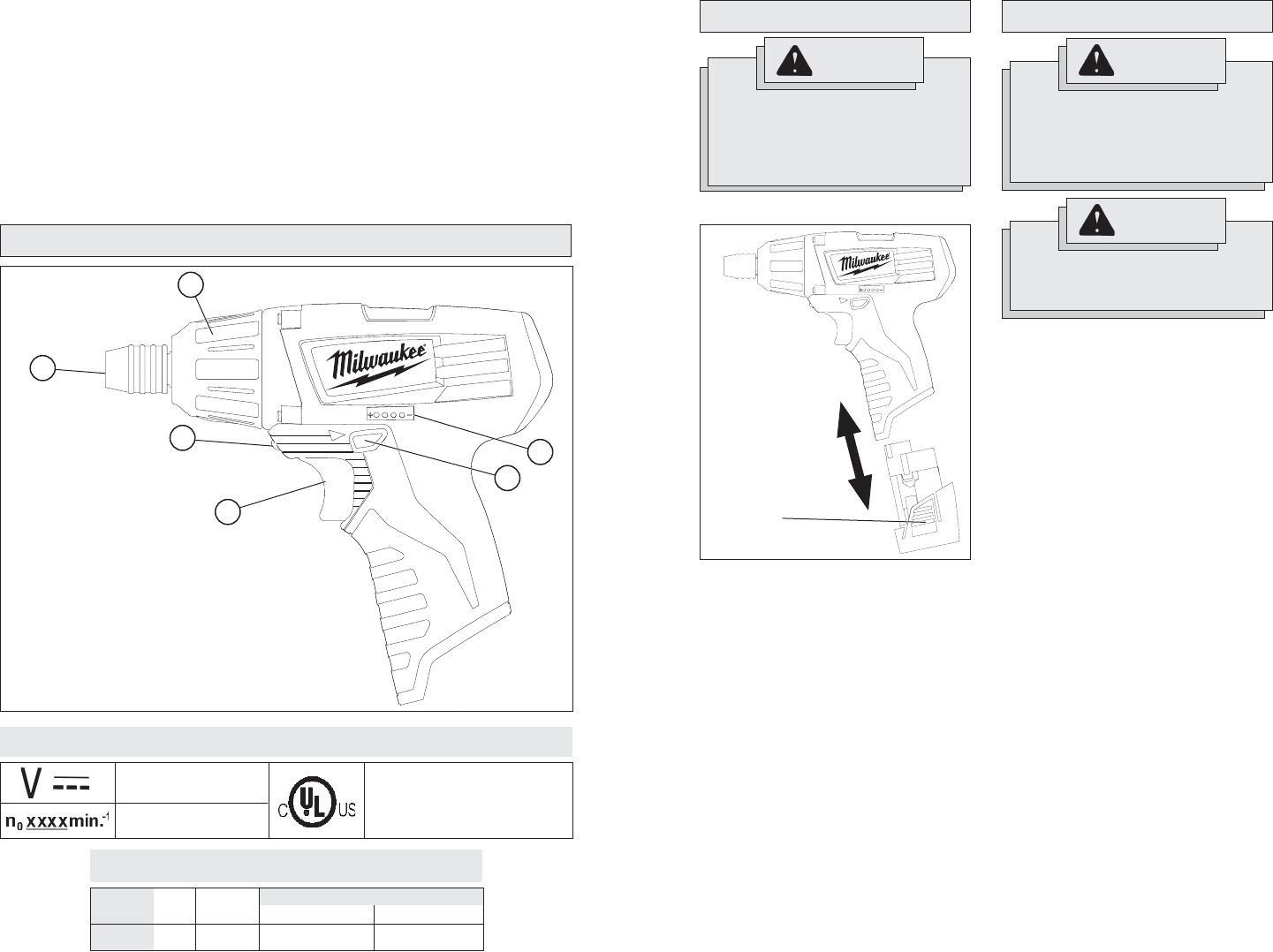
4 5
14
10
12
FUNCTIONAL DESCRIPTION
Direct Current
Symbology
No Load Revolutions
per Minute (RPM)
Specifi cations
Cat. No.
2401-20
Volts
DC
12
No Load
RPM
0 - 500
1. Bit holder collar
2. Clutch adjusting ring
3. Fuel Gauge
4. Control Switch
5. Trigger
6. LED
1
Underwriters Laboratories, Inc.,
United States and Canada
WARNING
ASSEMBLY
Always lock trigger or remove
battery before changing or removing
accessories. Only use accessories
specifi cally recommended for this
tool. Others may be hazardous.
WARNING
To reduce the risk of injury, wear
safety goggles or glasses with side
shields.
WARNING
Recharge only with the charger
specifi ed for the battery. For spe-
cifi c charging instructions, read the
operator’s manual supplied with
your charger and battery.
OPERATION
Installing Bits
Always remove the battery before inserting
or removing bits. Select the proper style and
size bit for the type of screw you are using.
1. To install the bit, press the bit into the
socket until the collar snaps back and
the bit is locked into place.
2. To remove the bit, pull out the collar,
then pull out the bit.
NOTE: It is not necessary to hold the collar
out when installing and removing bits. The
fi rst time the tool is used, it may be necessary
to pull out the collar.
Inserting/Removing the Battery
To remove the battery, push in the release
buttons and pull the battery pack away from
the tool.
To insert the battery, slide the pack into
the body of the tool. Make sure it latches
securely into place.
Fuel Gauge
To determine the amount of charge left in the
battery, pull the trigger. The Fuel Gauge will
light up for 2-3 seconds.
To signal the end of charge, 1 light on the fuel
gauge will fl ash for 2-3 seconds.
Fig. 1
3
5
4
Release
buttons
6. WARNING: Some dust created by
power sanding, sawing, grinding, drill-
ing, and other construction activities
contains chemicals known to cause
cancer, birth defects or other reproduc-
tive harm. Some examples of these
chemicals are:
• lead from lead-based paint
• crystalline silica from bricks and cement
and other masonry products, and
• arsenic and chromium from chemically-
treated lumber.
Your risk from these exposures varies,
depending on how often you do this
type of work. To reduce your exposure
to these chemicals: work in a well ven-
tilated area, and work with approved
safety equipment, such as those dust
masks that are specially designed to
fi lter out microscopic particles.
2
6
Capacities
Drilling in Wood
1/2"
Driving Screws
1/4"



